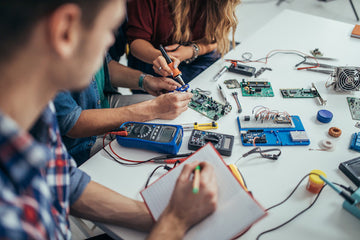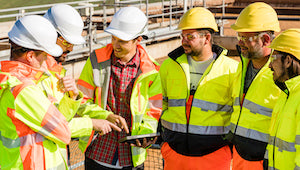This online welding training course covers the fundamentals of industrial welding. Each topic stresses welding safety considerations and precautions. Covers different types of welds and both oxyfuel and arc welding equipment. Describes welding techniques and symbols. Discusses ways to avoid weld faults. This course has no prerequisites. Welding Principles is available in online technical training and course manual formats.
TPC Training is authorized by IACET to offer 0.6 CEUs for this program.
Review a full course list for Welder Training
Lesson 1 - Fundamentals of Welding
Topics:
Metals; Common and production welding processes; Kinds of welds and welded joints; Weld parts; Fusion; Penetration; Joint design and fitup
Learning Objectives:
– Describe fusion welding, resistance welding, filler rods, and electrodes.– Compare the oxyfuel and arc welding processes and compare the SMAW, GMAW, and GTAW processes.– Describe and sketch the following kinds of joints-butt, lap, tee, corner, and edge.– Describe the following kinds of welds-groove, fillet, plug, slot, spot, and seam.– Name and locate the parts of a weld.– Discuss basic considerations in joint design and fitup.
Lesson 2 - Welding Safety
Topics:
Fire and explosion hazards; Burns; Fumes and gases; Respiratory, eye, face, and hearing protection; Protective clothing; Handling cylinders; Shock
Learning Objectives:
– Explain the importance of good housekeeping in an area where welding is taking place.– List at least three precautions to take to avoid fires and explosions when welding.– Describe two methods of protecting yourself against the fumes and gases associated with welding.– Describe the personal protective equipment required when welding.– Explain the precautions to take when using and handling cylinders and regulators.
Lesson 3 - Oxyfuel Welding Equipment
Topics:
Gas pressure regulators; Check valves; Hoses, torches, and tips; Filler rods; Protective gear; Preparing to weld; Making the weld; Shutdown
Learning Objectives:
– Briefly describe the oxyfuel welding process and the components of an oxyfuel welding outfit, including the lighting device.– Discuss safety precautions and personal protective gear required for working with oxyfuel equipment.– List the steps involved in preparing to weld.– Compare the neutral, carburizing, and oxidizing flames.– List the steps in safely shutting down an oxyfuel welding system.
Lesson 4 - Arc Welding Equipment
Topics:
Welding with electricity; Constant current, voltage power sources; Welding machines, cables, electrodes, and electrode holders; Safety
Learning Objectives:
– List similarities and dissimilarities between oxyfuel welding and arc welding.
– Describe the electric welding circuit, including choice of ac or dc, dc polarity, and power sources.
– Discuss welding machine ratings in terms of amperage and duty cycle and describe features and uses of transformer, generator, rectifier, and inverter
welding machines.
– Discuss welding cable considerations and describe the electrodes and electrode holders used for SMAW, GMAW, and GTAW processes.
– Discuss the personal safety gear and precautions necessary for arc welding and explain how arc welding accessories are used.
Lesson 5 - Welding Techniques
Topics:
Selecting a process; Welding positions; Oxyfuel, SMAW, GMAW, and GTAW procedures
Learning Objectives:
– Explain what considerations affect the selection of a welding process.– Describe the four welding positions.– Explain why overhead welds are difficult to make and tell how to make them.– Describe the preparation required for oxyfuel welding, SMAW, GMAW, and GTAW processes.– Describe the procedures involved in oxyfuel welding, SMAW, GMAW, and GTAW processes.
Lesson 6 - Avoiding Weld Faults
Topics:
Common weld problems; Poor fitup; Shape problems; Internal defects; Effects of heat; Expansion and contraction; Identifying metals
Learning Objectives:
– Describe the effects of electrode selection, current, arc length, and travel speed on arc welding procedures.– Describe common causes of arc blow, a hard-to-start arc, and spatter, and explain why proper fitup is important.– Define the terms overlap, undercut, blowhole, and inclusion and explain the causes of each.– Explain how expansion and contraction can be controlled when welding.– Name and describe the various tests used to identify metals.








